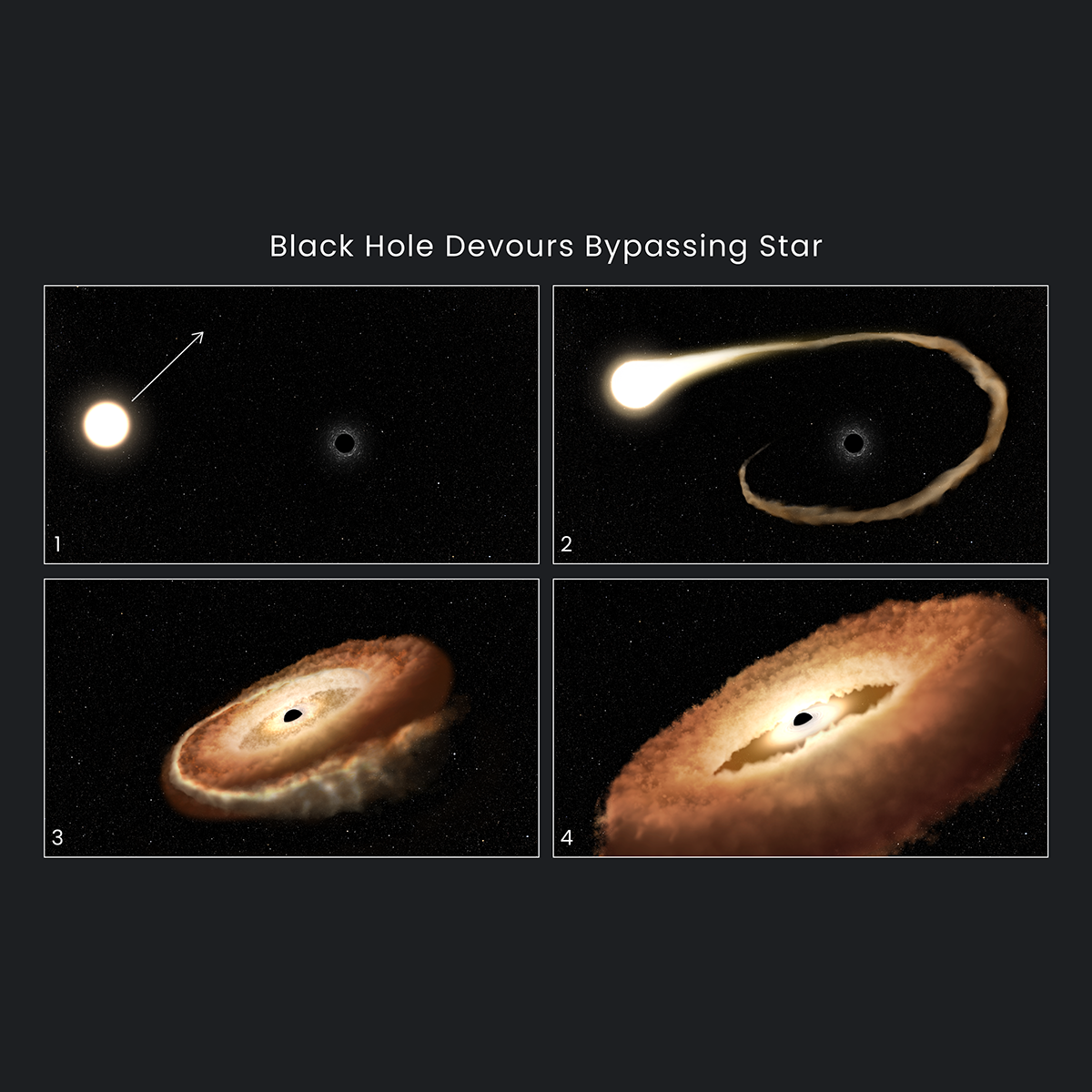
Summary
A Deep Gravitational Sinkhole Swallows Unlucky Bypassing Star
Black holes have such a voracious gravitational pull that they even swallow light. This makes them hungry monsters lurking in the eternal darkness. There’s no escape if you happen to stumble across one in the inky blackness of space. That’s no worry for astronauts who have yet to travel farther than the Moon. But entire stars can face that peril if they wind up in the wrong place at the wrong time.
Hubble astronomers got a front row seat to such an interstellar demolition derby when they were alerted to a flash of high-energy radiation from the core of a galaxy 300 million light-years away. Like a police officer arriving quickly at the scene of an accident, Hubble vision was trained on the mayhem before the collision was over. Hubble is too far away to see the doomed star getting sucked in. Instead, Hubble astronomers took the fingerprints of starlight coming from the mishap. These spectra tell a forensic story of a star falling into a cosmic blender. It was shredded, and pulled toward the black hole like a piece of stretched taffy. This process formed a donut-shaped ring of gas around the black hole with superheated gas bleeding out in every direction. About 100 insatiable black holes have been observed to date.

